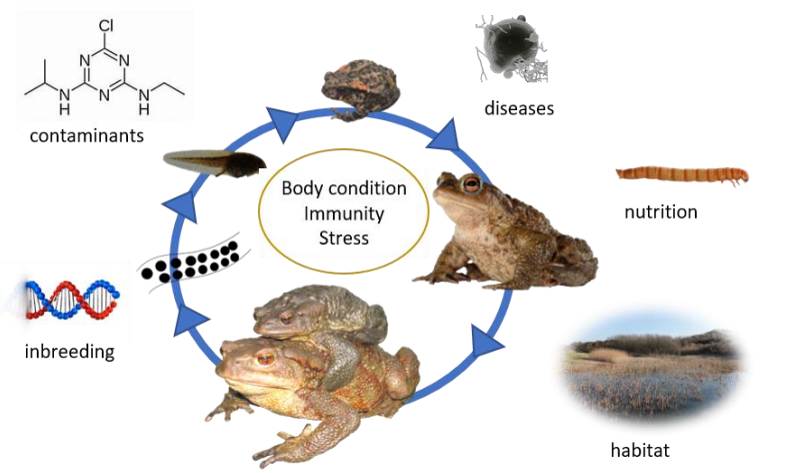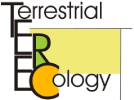Overarching Study into the Survival Of BUFO bufo
Linking pathology with ecology to preserve commonness of a declining emblematic species, the common toad (Bufo bufo)
Human influences on nature are the most important factor behind the current decline in biodiversity, forming the foundation of the ongoing sixth mass extinction event. It also includes the decline of widespread and thus common species. Small proportional reductions in populations of (to date) common species already have a large impact on ecosystem functioning and biomass.
Amphibians are more threatened than many other animals in the sixth mass extinction. The European common toad (Bufo bufo) occupies a variety of habitats. While its situation was still assessed as stable in 2008 by IUCN, the species has undergone recent, widespread declines in abundance. Multiple European countries (UK, Italy, Switzerland and the Netherlands) reported drastic declines in population sizes of 50% or more.

Understanding the causes of toad decline is key in designing measures to avert further biodiversity loss. Such enigmatic declines are probably driven by a complex interplay between multiple stressors: land use (e.g., agricultural cultivation practices, pesticide use), habitat (e.g., loss of ponds and small landscape elements) and connectivity loss (including migratory connectivity between breeding ponds and terrestrial habitats), climate change, loss of genetic diversity and disease.
To initiate the investigation into the causes behind toad declines, it is necessary to conduct a comprehensive analysis of the population trends. Sufficiently long time series are needed to estimate the long-term trends in population size and to assess whether the populations are decreasing, increasing or stable. During spring, toads undertake a widespread migration, which has been recorded by the v.z.w. Natuurpunt Studie in Flanders since 1981 (toad patrols).



